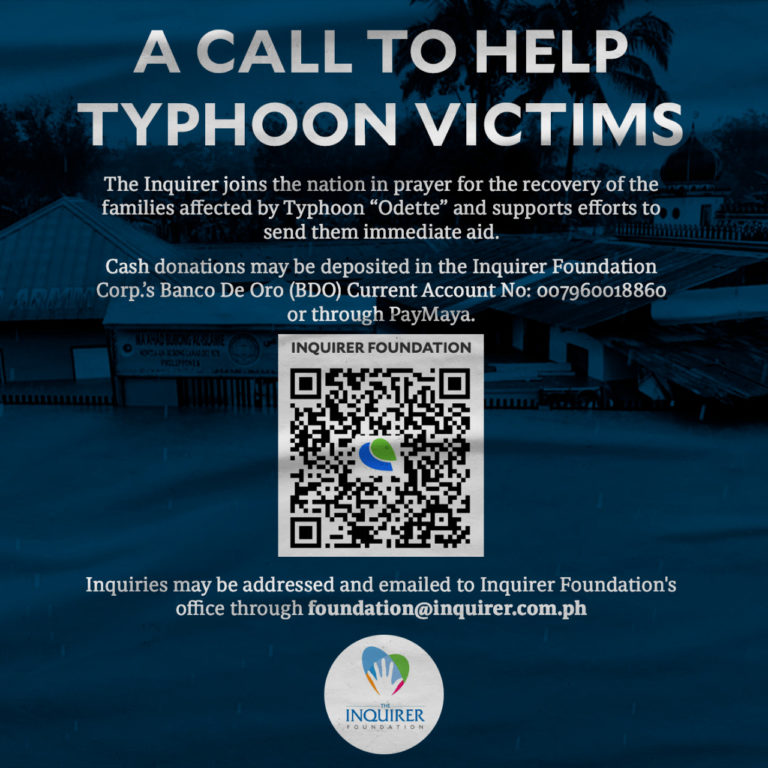Siargao is calling
“I’ll be dead in an hour” — I thought to myself, referring to the 33-percent battery life on my phone. It was the eighth night after Supertyphoon “Odette” laid waste on our little island called Siargao. Tap water was now accessible in most parts of the island, but potable water was still scarce. Electricity remained unavailable. Relief operations were now in full swing, and hopefully more would come in the following days. However, we still had no steady internet access and signals, further impeding bank transactions and remittances.
I sat in a moonlit room, breathing in the cold night breeze that now and then entered through our shattered glass door. It was a miracle that we got away with just a missing door. Others weren’t as lucky.
The typhoon landed at 2 o’clock on that awful Thursday afternoon. By then, I could hear the snapping of trees and the screeching sound of roofs peeling off—I didn’t know if it was ours or the neighbors’, all I could hope for was for our families to remain intact even if our houses couldn’t. Our windows were suddenly alive and struggling to break free. The walls were threatening to collapse and flood soon entered our house, at first barely noticeable and then it was knee-level.
I found myself pushing our door against the wind. My brother and I tried our best to prevent it from detaching while our father gathered materials to hold it more firmly. It took two long chairs and a couple of pieces of timber to do the job. We were tying our cabinet against the wall when we heard a loud crash from the second floor. It was a piece of flying debris that went straight to our glass door and shattered it. I can’t imagine the force it required to bring that door down when I myself had struggled to open it every day.
When we moved upstairs, our veranda was wide open, shattered glass on the floor, wind and rain freely entering our house uninvited. Tears were forming in my eyes, but I refused to cry. “It’s just a house, we can rebuild it after,” I told myself. Most of my books were already drenched, together with some of our household appliances, but still I refused to cry. “I don’t care what else the storm takes from us, as long as we’re safe,” I repeated this like a prayer in my head while all five of us crammed inside the bathroom, taking refuge from the disaster.
The next morning, the sky painted us the most beautiful sunrise I had seen in a while. It was as though nothing had happened and that we were just about to start our usual day. But when the daylight unveiled the aftermath of the typhoon, I saw the island at its worst—houses with no roof, debris scattered on streets, and mountains with bald trees, previously vibrant and green but now dead and brown. This was the kind of picture you saw only in post-apocalyptic movies, but there it was, a reality too difficult to unsee.
I strolled along the same streets where I had learned to walk, run, and drive, and yet it felt unfamiliar, like when you came to town after many years of being away and you saw that it had changed. Only that it happened overnight and the changes were not for the best.
I met some friends in the neighborhood and we exchanged smiles despite our face masks. I even smiled at strangers I would usually ignore on typical days. The gesture was simple but the message was there: “I’m happy to see you are safe.”
My heart broke every time I saw people looking at the wreckage they used to call their home. I tried to imagine what was running in their heads: “Where are we going to stay?” “What will we have for dinner?” “How will we bounce back from this?” “Why did this happen to us?” and perhaps more painful questions that remained unanswered. I saw children in the midst of the ruins, carelessly collecting wood, clothes, and anything that could be of use. Perhaps their parents were also looking for something to help their family get through the day, yet even if they managed to do so, they’d have to face the same problem the next day.
What’s even sadder is that we’re just a small part of the mass destruction left by Odette. It wreaked havoc not only on the island, but also across towns and cities in Mindanao and Visayas.
Everything that we’ve been through in the past two years is just too much. From last year’s pandemic to this year’s supertyphoon, we didn’t even get a breather. But Siargaonons are not the kind of people who easily give up. If there’s a valuable lesson our island has taught us—something worth pondering at this time of tribulations—it would be not to give up no matter how many times the waves hit us. This is how most of us learned to surf, swim, fish, and travel to places by sea. This is basically our way of life. And so, we will move on from here with the same mindset. With our remaining strength, we will hold on until help arrives.
* * *
Niell O. Figuron, 24, is from Siargao. He is an educator, a bookworm, and a Swiftie.

















